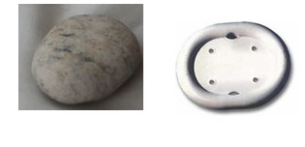Around 50% of women will experience some kind of pelvic organ prolapse or/and incontinence episode during their life.
There are many reasons for this ranging from childbirth to hereditary reasons. It is important to have a proper diagnosis (yet so many go undiagnosed as pelvic organ prolapse can be there one day and not visible the next).
Pelvic floor exercises have been proven to help and in some cases ‘cure’. But it is important to realise that when you stop doing pelvic floor exercises there is a significant chance that the prolapse/incontinence will return.
Where do you start? The moment you experience any kind of incontinence or symptoms of pelvic organ prolapse you must call your doctor or women’s health physiotherapist for an assessment. Make a diary of your experiences to help your medical advisor see what has been going on. Make a note of what activities you were doing at the time of experiencing any leaking.
Diaries can be downloaded from Bladder and prolapse diaries
Pessaries are a great way to stop the descent of the pelvic organs and they are so versatile, they do not need to be used all the time, it is up to you when and how you use them. Many sportswomen will use for instance the T pessary, IncoLite, IncoStress, Cube or tandem during their events. This helps greatly in preventing them from losing urine during activities and helps support the pelvic floor muscles and organs on impact during exercise.
A very good resource for pessaries can be found on YOUR PESSARY
Speak to your medical advisor about pessaries to help you obtain a better quality of life.





 Capture écran : Global Fistula Map
Capture écran : Global Fistula Map 

